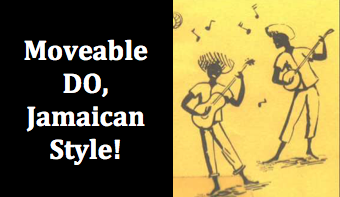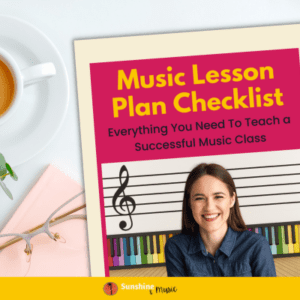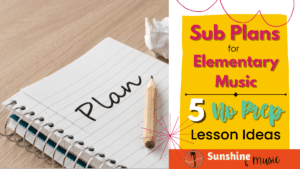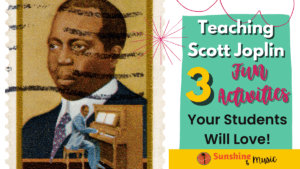The Song
How many of you have heard of the Caribbean folk song Hill and Gully Rider? If you haven’t I advise you to look into it and add it to your list of go-to songs. There is so much to like about it. First of all, it is about the Caribbean version of the headless horseman. Super cool! How often can you find a Halloween song that also exposing children to music from other cultures? Also, this song is a great way to introduce call and response form. It is sort of a verse and refrain song too, so you can talk about that form as well!

The top line is the refrain. The bottom two lines are the verse. Here are the other verses:
Verse 2:
Oh the moon shone bright down, Ain’t no place to hide down, And a zombie come a riding’ down.
Verse 3:
Oh my knees start a shaking down, And my heart start a quakin’ down, And I run til daylight breakin’ down.
Verse 4:
That’s the last I set down, Pray the Lord don’t let me down, Ain’t nobody gonna get me down.
The Activity
First, I tell my students we are going to learn a new musical form: call and response. I tell them the resting tone is DO, so we are in major. I have them sing the response part on solfege (DO DO DO DO). Then I teach them the words (Hill and Gully). I perform the song. At the end, we talk about the song and what is happening in it and how this story mimics that American story of the Headless Horseman. Then I ask them which part of the form – call or response – they think they were singing. ANSWER: response.
Next we put the song on instruments. It is a great time to review correct mallet grip and alternating mallets, since you are just playing one note (DO). I usually set the song in the key of D. Once we have played through the song, I tell them that DO can move to any note it wants. We call that changing the KEY of the song. I let students pick different notes to be DO. We talk about how changing the key makes the whole song either get higher or lower.
I love that it is a quick introduction to changing keys that is SUPER SIMPLE. I’ve tried bringing it up during recorder playing and the kids have so music else on their mind at that point that it can blow their mind. But this quick activity will help them SO MUCH later when we do start to move DO around on the recorder. (At least, that is my hope).
Extending Our Learning
Next time I see the kids, we learn the words UNISON (everyone on the same part) and HARMONY (two or more parts). I teach the students a harmony part to sing during the response (MI MI FA MI). Half the class sings the original part and half sings the harmony. Then we switch. Then we put it on instruments. Then, we try changing keys again. But this time it may take a little longer to get things figured out, since kids have to determine, if DO is on F, where is MI and FA? Obviously there are some keys you won’t be able to get into because of accidentals, but C works and so does G. F and D can work too if you are willing to switch out some accidentals.









One Response